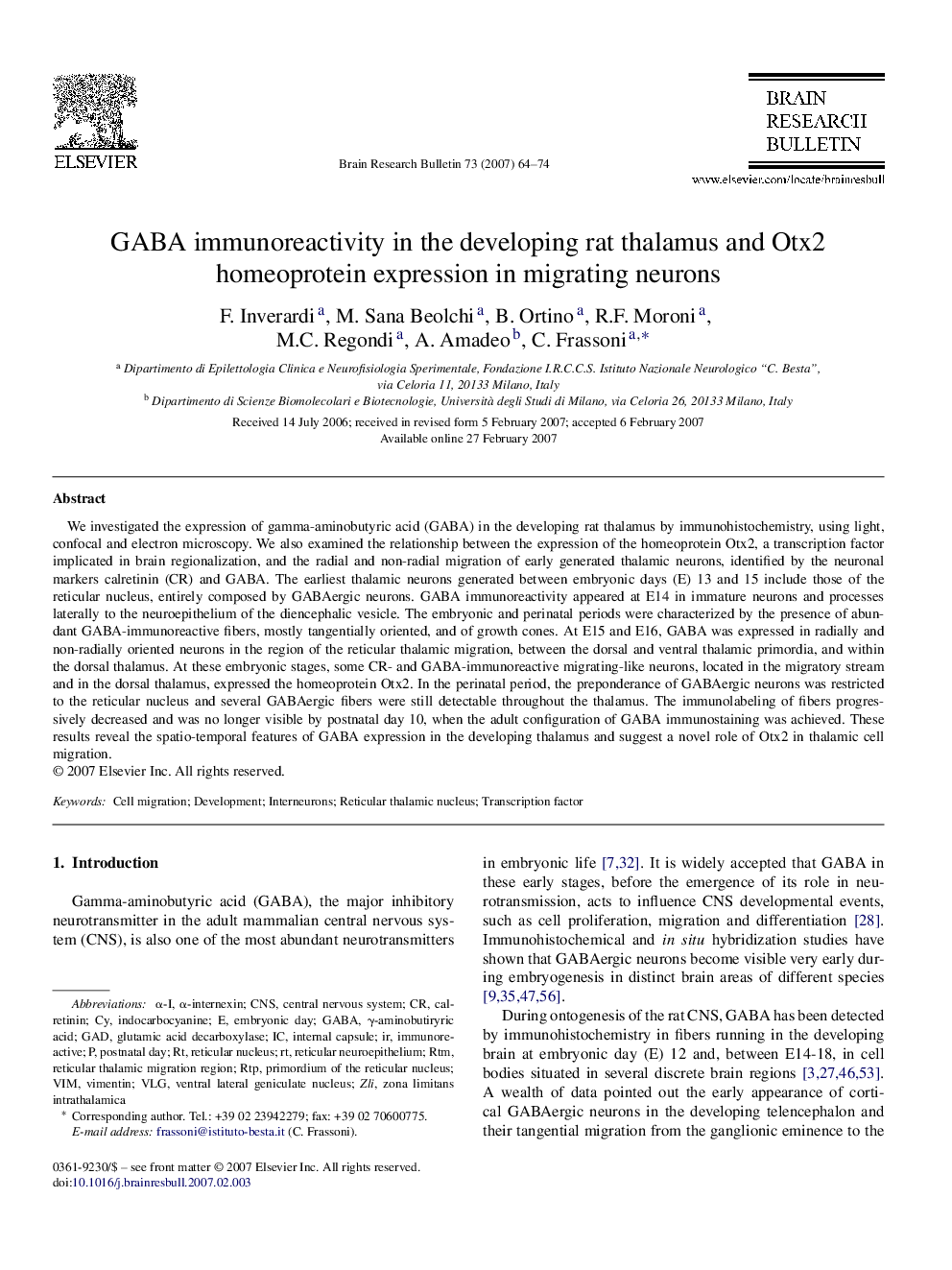| Article ID | Journal | Published Year | Pages | File Type |
|---|---|---|---|---|
| 4320108 | Brain Research Bulletin | 2007 | 11 Pages |
We investigated the expression of gamma-aminobutyric acid (GABA) in the developing rat thalamus by immunohistochemistry, using light, confocal and electron microscopy. We also examined the relationship between the expression of the homeoprotein Otx2, a transcription factor implicated in brain regionalization, and the radial and non-radial migration of early generated thalamic neurons, identified by the neuronal markers calretinin (CR) and GABA. The earliest thalamic neurons generated between embryonic days (E) 13 and 15 include those of the reticular nucleus, entirely composed by GABAergic neurons. GABA immunoreactivity appeared at E14 in immature neurons and processes laterally to the neuroepithelium of the diencephalic vesicle. The embryonic and perinatal periods were characterized by the presence of abundant GABA-immunoreactive fibers, mostly tangentially oriented, and of growth cones. At E15 and E16, GABA was expressed in radially and non-radially oriented neurons in the region of the reticular thalamic migration, between the dorsal and ventral thalamic primordia, and within the dorsal thalamus. At these embryonic stages, some CR- and GABA-immunoreactive migrating-like neurons, located in the migratory stream and in the dorsal thalamus, expressed the homeoprotein Otx2. In the perinatal period, the preponderance of GABAergic neurons was restricted to the reticular nucleus and several GABAergic fibers were still detectable throughout the thalamus. The immunolabeling of fibers progressively decreased and was no longer visible by postnatal day 10, when the adult configuration of GABA immunostaining was achieved. These results reveal the spatio-temporal features of GABA expression in the developing thalamus and suggest a novel role of Otx2 in thalamic cell migration.
